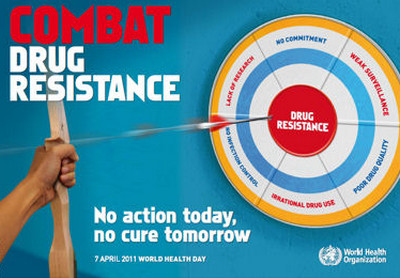Microbes are microorganisms that human can’t see it without the aid of microscopes. As small as it can be, some microbes: bacteria, viruses,fungi, and parasites have the wide range of ability to cause harm to human, animals and environment. There was no cure to bacterial associated diseases or infections until the discovery of the first ever antibiotic, penicillin by Alexander Fleming in 1928. Since then, antibiotics have been a life saving drugs for people. However, many factors such as over prescription of the antibiotics, incorrect usage of antibiotics and genetic mutation of microbes have given rise to the antibiotic resistance. The image below from Centers for Disease Control and Prevention below provide the spread of antibiotic resistance.

Image available from: https://www.cdc.gov/drugresistance/about.html
As the figure above illustrated, the resistant can be happen anywhere. The National Summary of the illness caused by antibiotic resistant in bacteria and fungus is recorded to be 2,049,442 cases and claimed 23,000 death in the United States (CDC , 2015) . So, what can we do to take on the challenge of the multi drug resistance microorganisms? The Centers for Disease Control and Prevention listed four ways to fight antibiotic resistance, which are listed as follow:
- Preventing Infections, Preventing The Spread of Resistance
- Tracking
- Improving Antibiotic Prescribing/Stewardship
- Developing New Drugs and Diagnostic Tests.
Practicing a good hygiene is probably the most effective way to lower the infectious disease , which in turn lower the usage of antibiotics. Also, keeping the record of the cases is important since people can take measure on sources and improve strategies. Since over prescribing and incorrect usage of antibiotics need to be stop to decrease the antibiotic resistance cases. As for the developing new drugs,pharmaceutical companies are more likely to develop drugs for chronic illnesses to generate more profit. Whereas, antibiotics have short course of medication with same money input for the creation would not generate much profit (Spellberg B et al , 2008). Therefore,researches on international levels, and a program know as crowd sourcing program has been implemented in many colleges and universities across the United States as well as other participating countries to combat antibiotic resistance.
Antibiotic resistance is the major health issues and everyone should be participate to prevent the further implications from it. Also, remember that the ability of small little things, microbes can claim many life and this matter should become awareness to the general public . Check out the Ted Talks by drug-resistance economist Ramanan Laxminarayan for additional information that stress the antibiotic resistance and approaches to this issue.

Image Available from: http://howshealth.com/antibiotic-resistance/
References:
- CDC. About antimicrobial resistance[Internet]. Atlanta(GA): Centers for Disease Control and Prevention (US) ; 2015 [updated 2015 Sept 8; cited 2016 Sept 18]. Available form: http://www.cdc.gov/drugresistance/index.html
- Discovery and development of penicillin[Internet]. American Chemical Society International Historic Chemical Landmarks; [cited 2016 Sept 18]. Available from:https://www.acs.org/content/acs/en/education/whatischemistry/landmarks/flemingpenicillin.html#alexander-fleming-penicillin
- Spellberg B, Guidos R, Gilbert D , Bradley J, Boucher HW, Scheld WM, Bartlett JG, Jr JE . The epidemic of antibioticresistant infections: a call to action for the medical community from the Infectious Diseases Society of America. Clinical Infect Diseases[Internet]. 2008 [cited 2016 Sept 18];46:155–64. Available from: http://cid.oxfordjournals.org/content/46/2/155.long
I find it interesting that drug companies are too greedy to help tackle the problem. I was reading an article earlier that mentioned something about the push for policy makers to take action against antibiotic resistance. Do you think this could help push pharmaceutical companies to invest in new drugs?
Reference
n.a. “General Background: What can be done about Antibiotic Resistance”. APUA. 20 Sep. 2016. Web. http://emerald.tufts.edu/med/apua/about_issue/what_can_be_done.shtml.
I definitely think this could help push the companies to invest in new drugs. It might be vary in the degree of which companies will invest but still, no businesses can really go against the policies made by policy makers , right ?
Good discussion. I had no idea that the profitability of antibiotics was low enough that drug companies are not motivated to produce more and better products. That’s scary!
It is scary but also at the same time, it is understandable that those companies want to make profit. I think this is when the ethical thinking come in play for those companies.